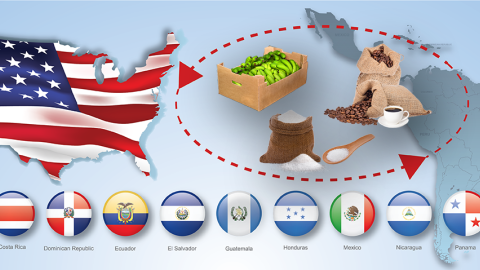Developments in the macroeconomy can have significant consequences for agriculture. Key factors linking agriculture to the U.S. and global macroeconomy are exchange rates, international trade, foreign and domestic income, employment, interest rates, and energy costs. International and domestic macroeconomic changes can cause major shifts in the values of these indicators, altering a country's agricultural prices, production, consumption, and trade.
ERS’s work covers research and analysis on the effects of macroeconomic conditions on U.S. and international agriculture, including effects of the recent economic crisis and the factors in commodity price increases. ERS provides data sets on exchange rates and on macroeconomic indicators for a number of countries, and takes a lead role in preparing USDA’s 10-year baseline projections on major agricultural commodities in the United States and selected countries.
ERS provides a range of data products and reports relating to macroeconomics and agriculture.
Periodic, Scheduled Outputs
- The Outlook for U.S. Agricultural Trade, which forecasts U.S. agricultural exports and imports for the upcoming fiscal year, by country and sector, contains a section on the economic outlook for the United States and the world.
- The Agricultural Exchange Rate Data Set data set contains annual and monthly data for exchange rates important to U.S. agriculture. It includes both nominal and real exchange rates for 79 countries, plus the European Union (EU), as well as real trade-weighted exchange rate indexes for many commodities and aggregations. All series are updated quarterly. Data series start at the beginning of 1970 and run to the last available data point.
- The International Macroeconomic Data Set provides historical and projected data for 189 countries that account for more than 99 percent of the world economy. These macroeconomic data and projections are assembled explicitly to serve as underlying assumptions for the annually updated USDA agricultural supply and demand projections, which provide a 10-year outlook on U.S. and global agriculture.
- USDA’s Agricultural Baseline Projections, an annual report published in February, offers 10-year projections for the farm sector from USDA’s annual long-term analysis. The associated Baseline Database covers projections for the four major feed grains (corn, sorghum, barley, and oats) in addition to the other major feed crops and livestock.
- International Baseline Projections data indicate supply, demand, and trade for major agricultural commodities for selected countries. These projections provide foreign country detail supporting the annual USDA agricultural baseline, which provides longrun, 10-year projections



